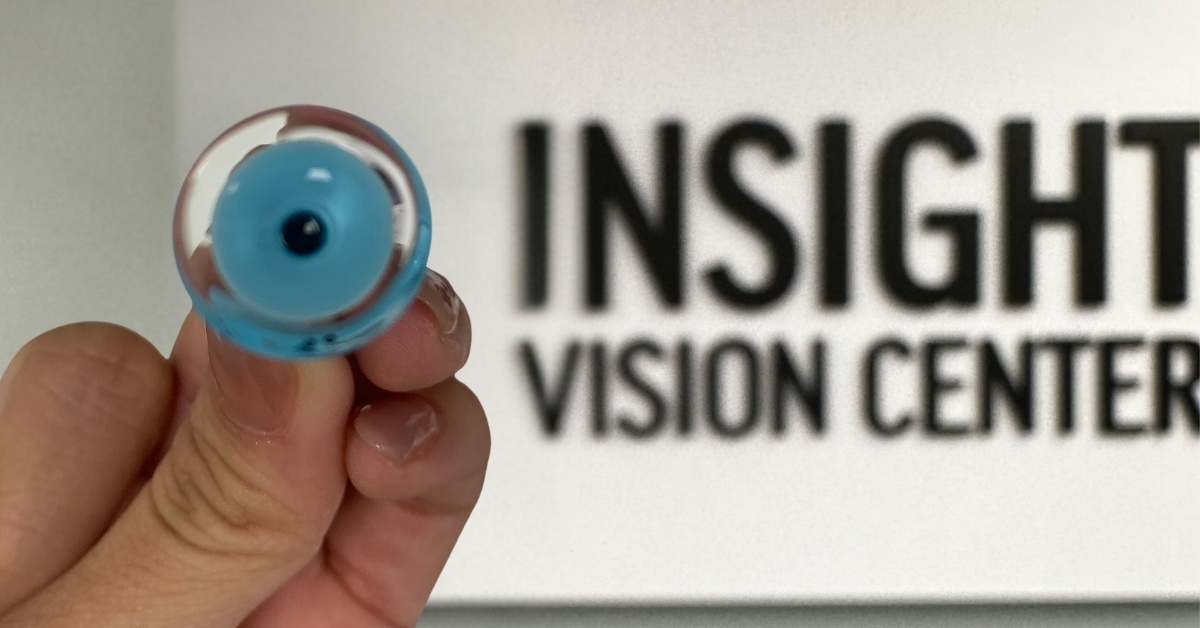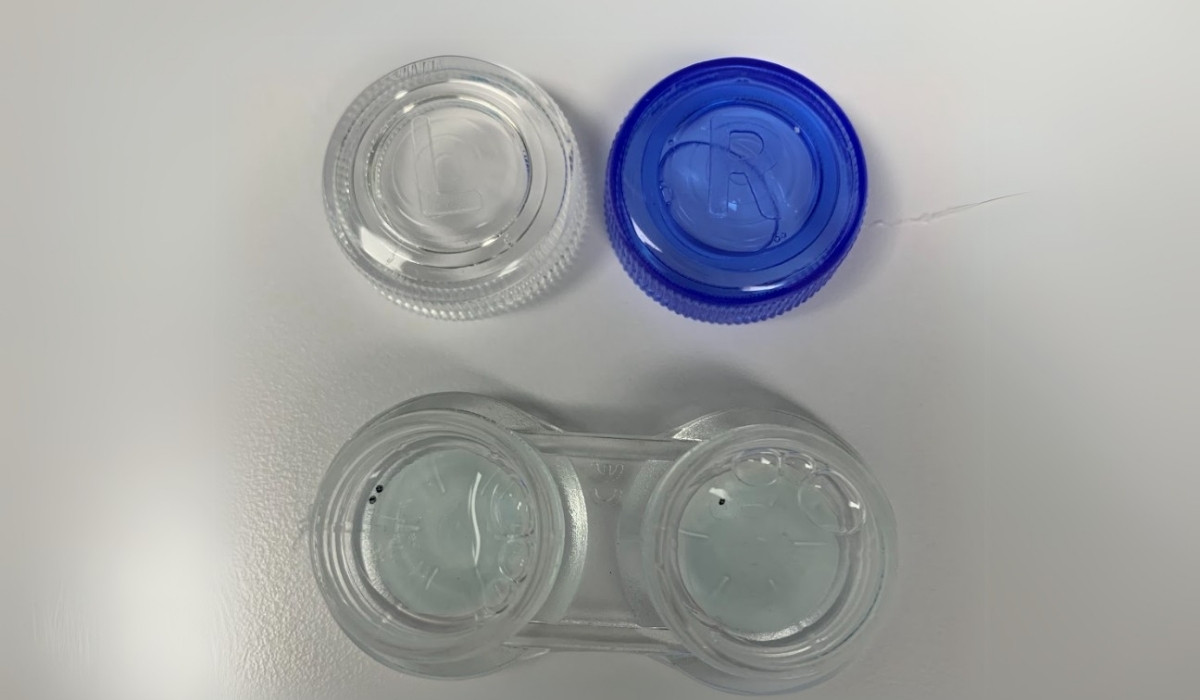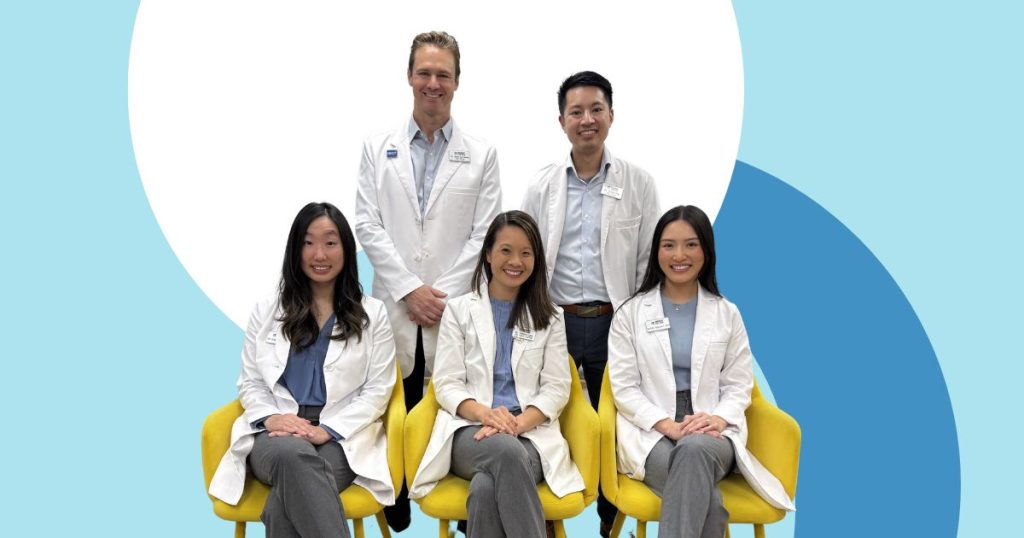This page provides an in‐depth look into the experience of growing up with myopia, from understanding early vision challenges to exploring corrective strategies and lifestyle adjustments. Discover how early recognition, academic and emotional support, and personalized care from our pediatric eye doctors can empower children to achieve clear vision and confidence.

Understanding Myopia in Children
Myopia, often known as nearsightedness, is a condition that makes it difficult for children to see distant objects clearly while allowing them to see things nearby with ease. It typically begins during the early school years and may continue to change as the child grows, affecting both academic and social aspects of life. With the right attention and care from our pediatric eye doctors, children with myopia can enjoy clear vision, learning success, and active participation in the activities they love.
When a child is myopic, their eyes work differently from those with normal vision. Essentially, the eyeball may be slightly longer than usual or the cornea might have a steeper version of curvature, leading to the difficulty in seeing objects at a distance. In practical terms, a myopic child might squint more often, hold books or screens closer than their peers, or appear to have trouble following along with board work in class.
For many children, this condition goes unnoticed until behavior changes or declining school performance prompt an eye examination. It is important to understand that myopia is not just about seeing things clearly; it also affects a child’s confidence and overall participation in activities ranging from sports to social interactions. Our pediatric eye doctors emphasize that early detection and periodic monitoring are key to ensuring that a child’s vision is optimized throughout their formative years.
Recognizing Myopia Signs in Children
There are several noticeable behaviors and physical signs that may indicate early myopia in children. Recognizing these signs early helps parents and educators understand that an eye examination might be necessary. Children may not always voice their visual difficulties, so paying close attention to their habits is crucial.
The Importance of Early Detection and Regular Exams
Early detection of myopia is crucial in managing the condition and ensuring that children don’t face unnecessary challenges down the road. Routine eye examinations, recommended to begin as early as age 3 and repeated annually, can identify myopia before it starts to significantly affect academic and social life. These screenings also help in catching other potential vision issues early on, which is why continuous monitoring is emphasized by our pediatric eye doctors.
During these routine exams, our pediatric eye doctors assess the child’s vision in various ways to determine the extent of myopia and identify any other issues. Regular check-ups enable a gradual, careful observation of how the child’s vision develops over time. This ongoing process allows for the adjustment of corrective treatments and ensures that educational challenges linked to vision problems can be swiftly managed.
Parents and caregivers are encouraged to trust in these regular assessments as a critical component of maintaining their child’s overall eye health. With advances in vision care and personalized management plans, there is every reason to feel optimistic about a child growing up with myopia.
Common Experiences: Challenges in School, Social Settings, and Physical Health


Early Management and Corrective Tools
Once myopia is diagnosed, there are several strategies available to manage the condition effectively. The goal is to correct the child’s vision while also slowing the progression of myopia. With early intervention, children can continue to enjoy clear vision and overcome both academic and social obstacles.
There are various corrective options that our pediatric eye doctors commonly recommend for a myopic child, each designed to specifically address the unique needs of growing eyes. These options not only correct the vision but sometimes also help in controlling how rapidly the vision changes during the critical growth years.

Addressing Long-Term Risks of Progressive Myopia
Unchecked myopia can lead to more serious issues later in life. When myopia progresses rapidly, the eye continues to elongate or the curvature intensifies, which can increase the risk of several eye conditions as the child grows older. Understanding these potential long-term effects is an important part of the conversation when addressing myopia in children.
Among the most concerning risks are:
- Retinal Detachment: A condition where the retina may tear or detach due to the stretched structure of the eye.
- Myopic Maculopathy: A condition affecting the central part of the retina, which can impact detailed vision.
- Glaucoma: Increased pressure inside the eye that can damage the optic nerve over time.
- Cataracts: The premature clouding of the lens, affecting overall visual clarity.
Early intervention with corrective lenses and specialized myopia control treatments not only sharpens vision day-to-day but also plays a significant role in shifting this trajectory, reducing the likelihood of these future complications. Our pediatric eye doctors carefully monitor each child’s progress, ensuring that the chosen strategies are both effective and safe as their eyes continue to develop.
Holistic Approaches: Lifestyle and Environmental Adjustments
Corrective measures are a primary element of managing myopia in children, but lifestyle changes can also make a noticeable difference. In today’s digital age, where screens are nearly ubiquitous, ensuring that children have balanced daily routines is more important than ever. Our pediatric eye doctors often recommend simple but effective adjustments to help minimize the progression of myopia.
A key lifestyle recommendation is to incorporate more outdoor time into a child’s routine. Studies have shown that spending at least two hours a day outside can help delay the onset of myopia. Outdoor light exposure is believed to play a role in maintaining a healthy eye growth pattern, thereby reducing the likelihood of rapid myopic progression.
Additionally, limiting screen time and ensuring proper lighting during near work are practical steps that can aid in reducing eye strain. Encouraging children to take frequent breaks, such as following the 20-20-20 guideline (every 20 minutes, looking at something 20 feet away for 20 seconds), can be incredibly helpful. These seemingly small changes, when combined with consistent eye examinations, build a strong foundation for long-term eye health.
Creating a balance between screen time, reading, and outdoor activities is vital. While educational screens and digital learning are important, a regular dose of natural light and distance viewing can ease the stress on young eyes. Our pediatric eye doctors take a holistic view and offer guidance to integrate these lifestyle modifications for sustained eye comfort and overall well-being.
Emotional Well-Being Support for Myopic Children
The journey of growing up with myopia is not just a physical experience, it also touches on the emotional and psychological realms. It can be challenging for any child to feel different because of a constant need for glasses or corrective lenses, especially when these differences are highlighted during sensitive developmental years. Parents, educators, and our pediatric eye doctors all play a role in reassuring children that their vision condition is simply a part of who they are, not a limitation.
Clear communication and empathy are essential. When children understand why they need glasses or why they must take breaks from screen time, they are more likely to embrace these habits without feeling ashamed or isolated. Encouraging open conversations about vision challenges helps to normalize the situation and reinforces the idea that many children share similar experiences.
Our pediatric eye doctors often remind families that emotional support and a nurturing environment are as critical as any corrective measure. When a child feels secure and well-informed, their ability to engage confidently in school activities and social interactions increases. After all, a confident child is a more active, happy, and resilient learner.
Personalized Guidance from Our Pediatric Eye Doctors
The journey through childhood is filled with constant changes, and managing myopia during this time requires careful monitoring and customized care. Our pediatric eye doctors are dedicated to ensuring that each child receives a tailored treatment plan that evolves with their vision needs. They blend standard corrective methods with innovative approaches to slow the progression of myopia, providing an all-encompassing strategy for clear, comfortable vision.
Every visit to the eye care office is an opportunity for our pediatric eye doctors to adjust treatment plans, answer parental questions, and assess the continuing effects of the chosen interventions. This ongoing care is designed to catch any changes early, ensuring that the vision correction remains as effective as possible. Parents are encouraged to maintain an open line of communication with our pediatric eye doctors, especially if they notice any shifts in their child’s behavior, academic performance, or physical signs of eye strain.
The personalized care offered by our pediatric eye doctors aims to transform the experience of growing up as a myopic child from one filled with uncertainty into one where proactive, thoughtful management provides a clear path for a bright future. The thoughtful blend of corrective devices, innovative treatments, regular monitoring, and lifestyle advice creates a supportive framework that empowers children to thrive in every aspect of their lives.
Final Thoughts and Next Steps
Growing up with myopia involves academic, social, and physical challenges that are best managed early on. With comprehensive corrective options, lifestyle adjustments, and ongoing personalized care from our pediatric eye doctors, children can look forward to clearer vision and a more confident future. Routine exams and open communication are key, please contact us with any concerns.

The Highest Rated Specialty Eye Care Center In Orange County

What Our Patients are Saying
“Insight Vision Center staff were excellent and extremely kind as always. The office is super clean and the technology of the machines they use to assist in examining patients in second to none. I am extremely happy to have found Insight Vision Center and their doctors.”
⭐⭐⭐⭐⭐
Elaine N.
“10/10 experience. Everybody was friendly, and incredibly knowledgeable. I’m so happy I have a go-to optometrist now.”
⭐⭐⭐⭐⭐
Maria M.

Technical Aspects of the Scleral Lens Fitting Process
Determining whether you’re a good candidate for scleral lenses starts with a detailed map of your cornea and precise measurements of your eyes. Our eye doctors use advanced technology to choose the ideal lens design and size for your unique eye shape. Follow-up appointments help fine-tune the lenses to ensure maximum comfort and clear vision. This personalized evaluation sets scleral lenses apart from other options, offering a solution tailored to your specific visual and comfort needs.

Top-Rated Specialty Contact Lens Center in Orange County
At Insight Vision Center Optometry, we’re proud to serve the diverse communities of Orange County and even patients who travel from abroad for expert specialty contact lens care. Conveniently located in Costa Mesa, our clinic is easily accessible from Newport Beach, Huntington Beach, Irvine, Santa Ana, and beyond.
Our world-class team of specialists has extensive experience fitting contact lenses for even the most challenging cases. With cutting-edge technology and a true passion for improving lives, we deliver the highest level of care from early diagnosis to advanced treatment options.
As Orange County’s leading experts in scleral and specialty contact lenses, we’re committed to helping you achieve the best possible results. Whether you need advanced lenses or expert guidance, we’re here to help you see the world clearly again.





